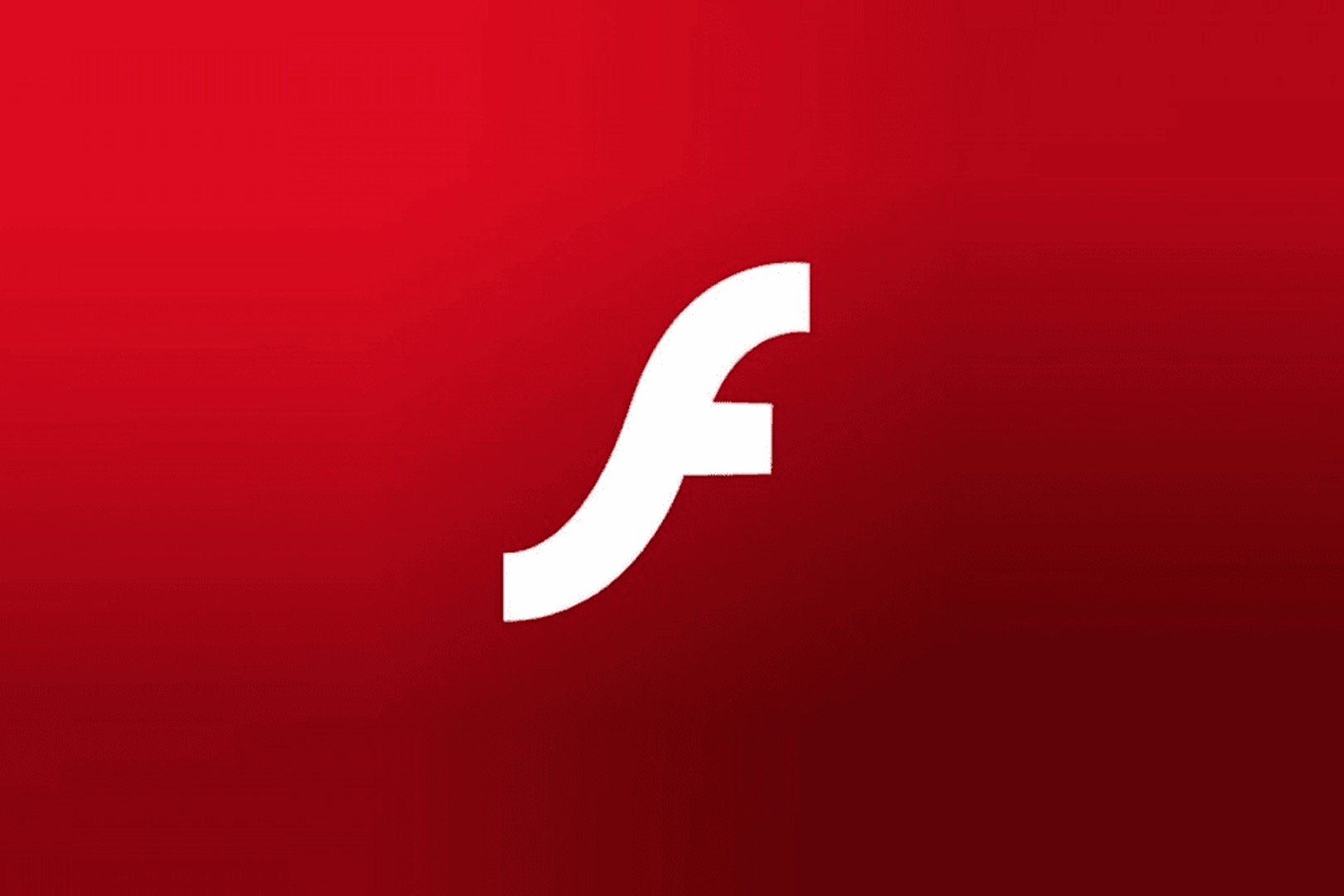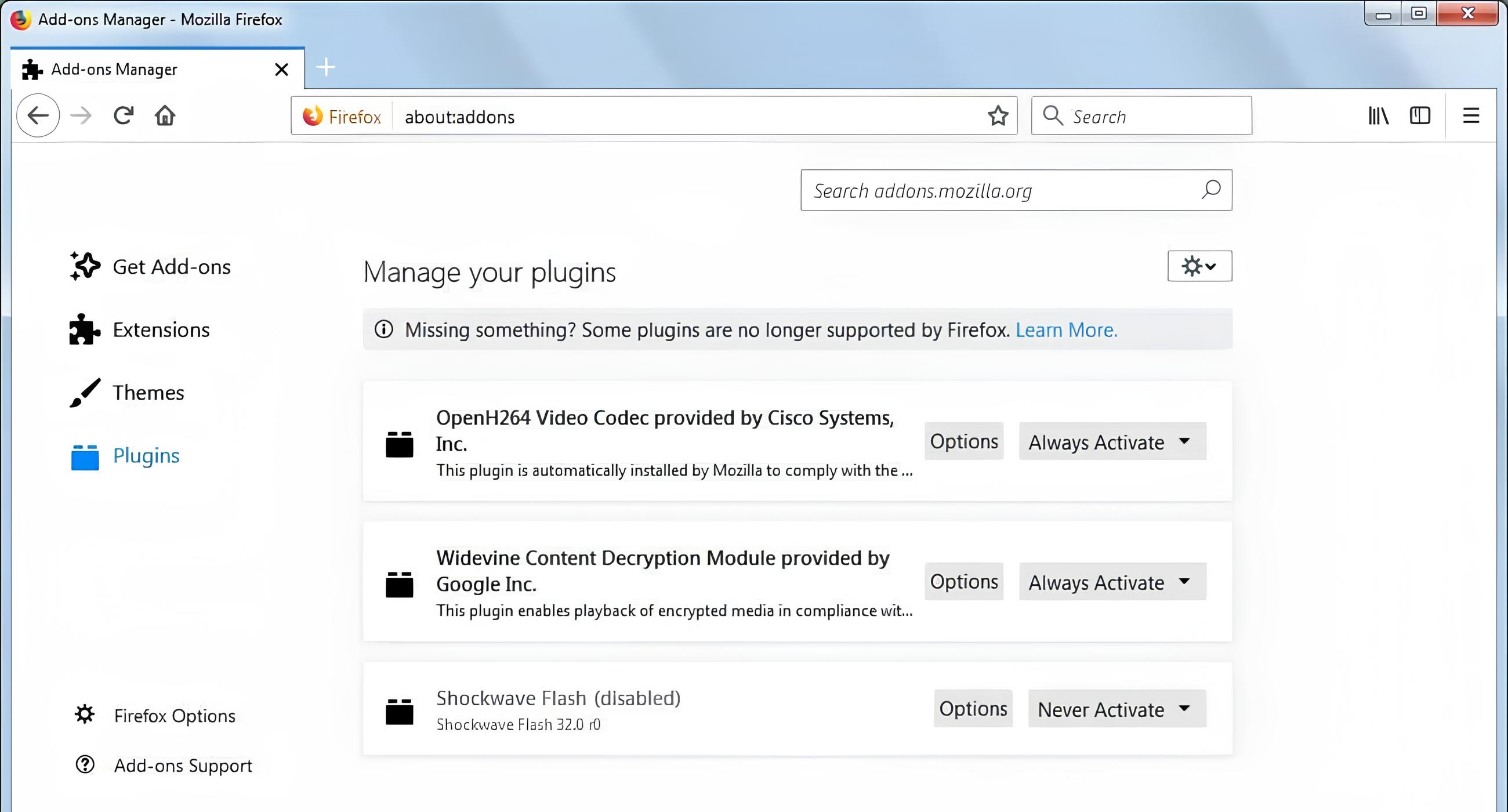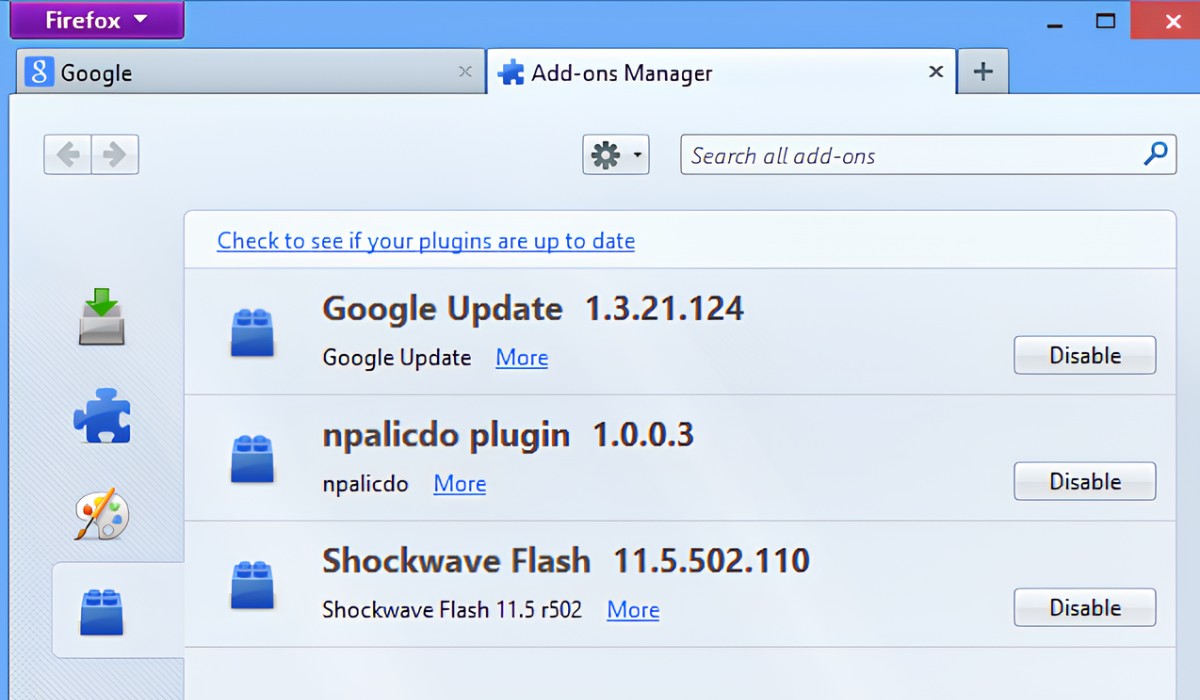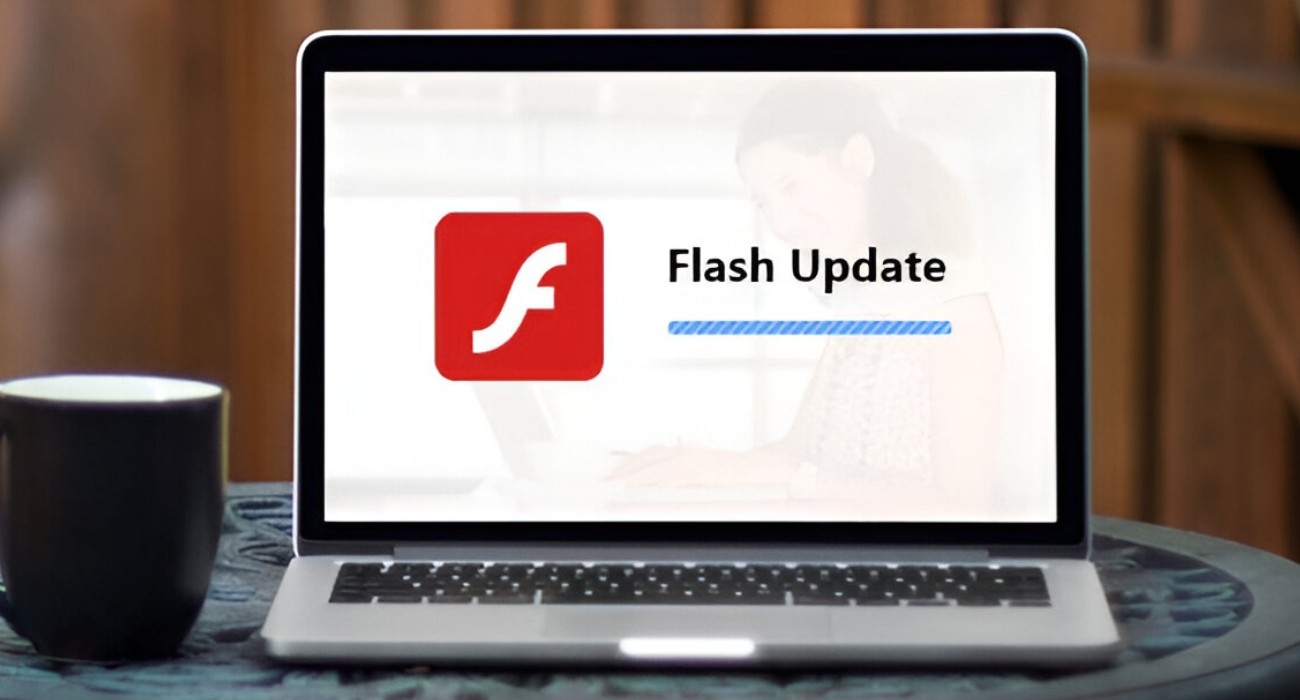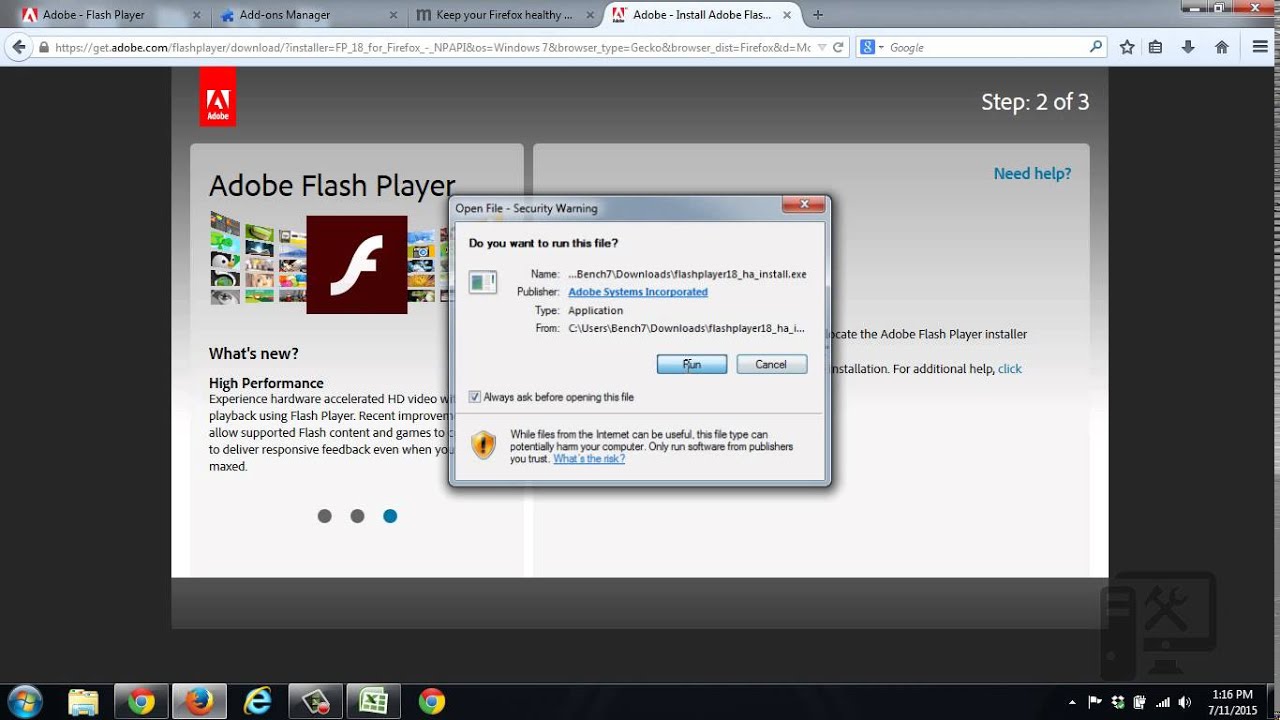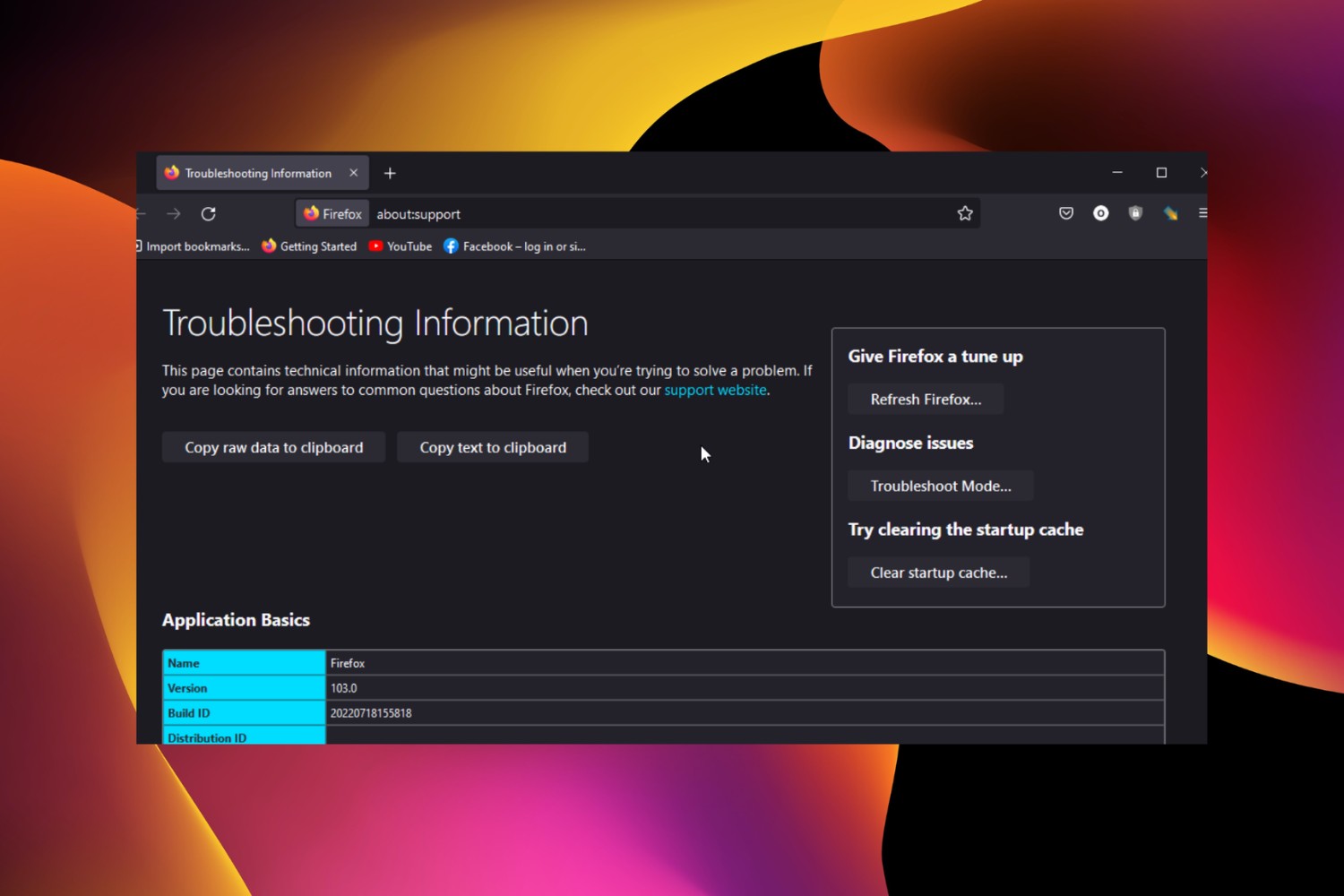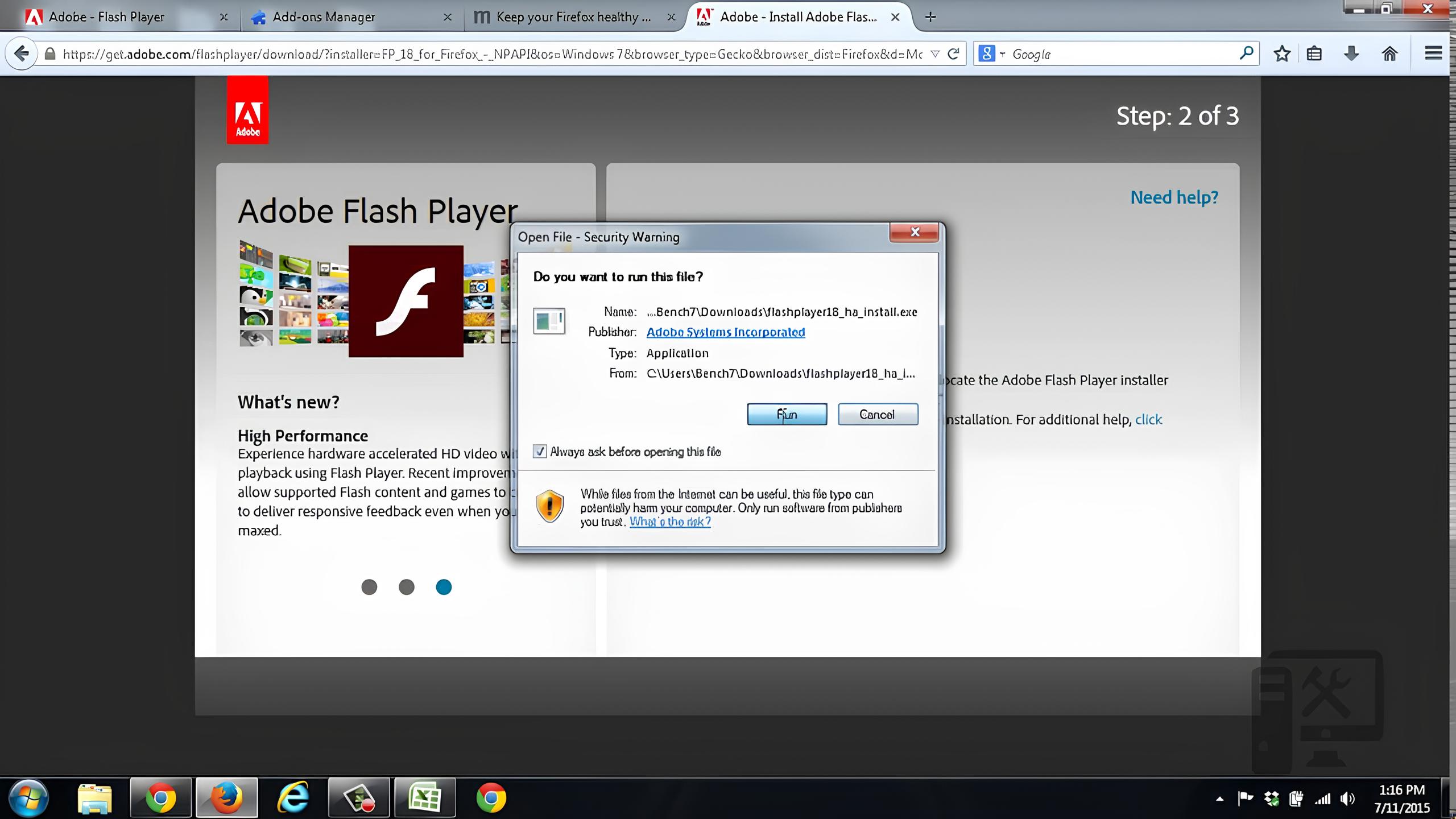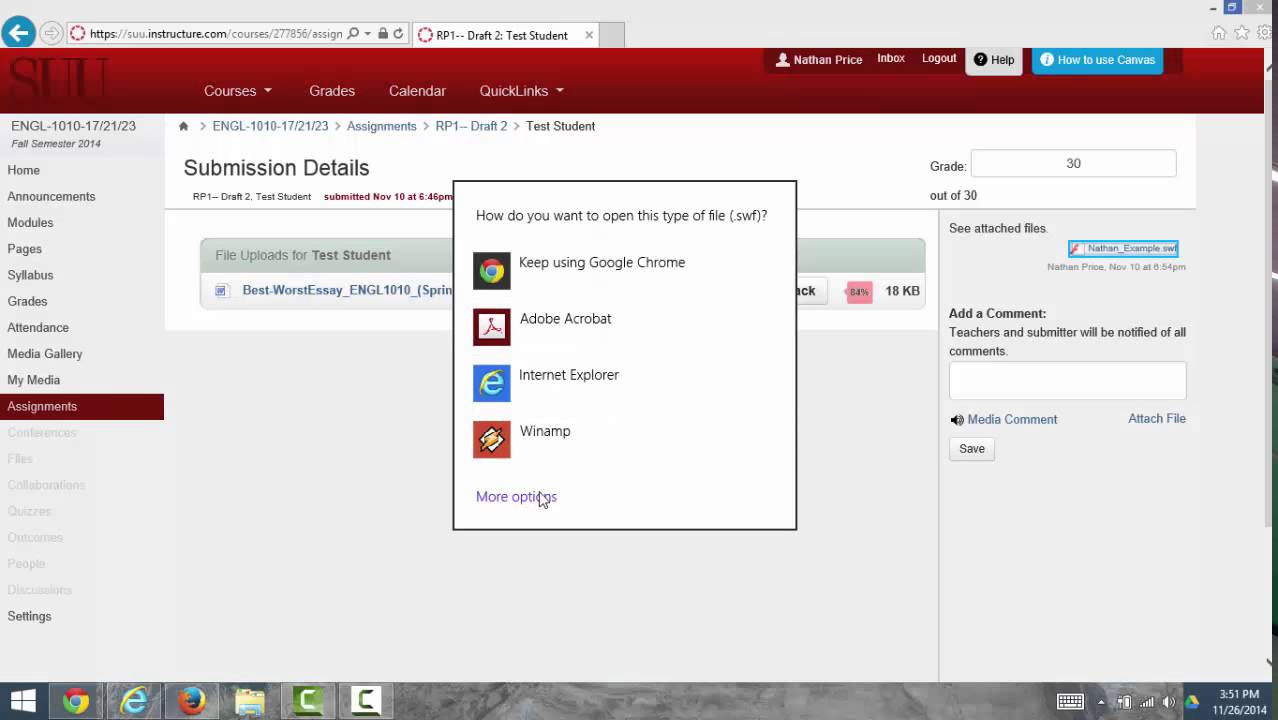Introduction
When it comes to browsing the web, Firefox stands out as a popular choice among users for its robust features and customizable options. One of the key components that enhance the browsing experience in Firefox is Shockwave Flash. This powerful technology enables the seamless playback of multimedia content, making it an indispensable tool for enjoying videos, animations, and interactive elements on the web.
As we delve into the realm of Shockwave Flash in Firefox, it's essential to understand its significance and the impact it has on the browsing experience. From its inception, Shockwave Flash has revolutionized the way we interact with multimedia content on the internet, offering a dynamic platform for developers to create engaging and immersive web experiences.
In this article, we will explore the intricacies of Shockwave Flash in Firefox, shedding light on its functionality, benefits, drawbacks, and the methods to enable or disable it within the browser. By gaining a deeper understanding of Shockwave Flash and its integration with Firefox, users can harness its potential to optimize their browsing experience while being aware of its limitations.
Join us on this journey as we unravel the mysteries of Shockwave Flash in Firefox, uncovering the nuances that shape our online interactions and empowering users to make informed decisions about their browsing preferences. Let's embark on this exploration of Shockwave Flash in Firefox, where technology meets creativity to deliver a captivating web experience.
What is Shockwave Flash?
Shockwave Flash, often referred to as Adobe Flash, is a multimedia software platform that revolutionized the way we interact with content on the web. It was developed by Macromedia and later acquired by Adobe Systems, becoming an integral part of the internet's multimedia landscape. Shockwave Flash is renowned for its ability to deliver rich and interactive multimedia experiences, encompassing animations, videos, games, and interactive applications.
At its core, Shockwave Flash operates as a browser plugin, seamlessly integrating with web browsers to enable the playback and execution of multimedia content. This versatile platform supports vector graphics, raster graphics, audio, and video, empowering developers to craft visually stunning and dynamic web experiences. Its widespread adoption has led to the proliferation of Flash-based content across the internet, shaping the way users engage with websites and applications.
One of the defining features of Shockwave Flash is its support for scripting languages such as ActionScript, which facilitates the creation of interactive elements within Flash content. This capability has fueled the development of immersive web applications, online games, and interactive multimedia presentations, showcasing the versatility and creativity that Shockwave Flash brings to the digital realm.
Over the years, Shockwave Flash has become synonymous with online multimedia, serving as the backbone for countless websites and applications that rely on its capabilities to deliver compelling content. From animated banners and interactive tutorials to browser-based games and multimedia-rich websites, Shockwave Flash has left an indelible mark on the internet, shaping the way we consume and interact with digital content.
Despite its widespread use and impact, the emergence of modern web technologies has led to a gradual shift away from Shockwave Flash, with HTML5 and other standards gaining prominence for multimedia content delivery. However, Shockwave Flash continues to hold a significant place in the history of web development, leaving a lasting legacy as a pioneering platform that redefined the possibilities of multimedia on the internet.
In essence, Shockwave Flash represents a pivotal chapter in the evolution of web technology, embodying the creativity, innovation, and interactivity that have shaped the digital landscape. Its influence extends far beyond its technical capabilities, encompassing a legacy of creativity and expression that has enriched the online experience for users around the world.
How Shockwave Flash works in Firefox
Shockwave Flash integrates seamlessly with Firefox, enhancing the browser's capability to render and interact with multimedia content. When a user accesses a web page containing Flash-based elements, Firefox leverages the Shockwave Flash plugin to interpret and display the content, ensuring a smooth and immersive browsing experience.
Upon encountering Flash content, Firefox invokes the Shockwave Flash plugin, which then processes the multimedia elements embedded within the web page. This process involves rendering vector graphics, playing audio and video files, and executing interactive scripts, all of which contribute to the dynamic nature of Flash-based content.
The integration of Shockwave Flash with Firefox enables users to enjoy a wide array of multimedia content, including animations, videos, games, and interactive applications, directly within the browser window. This seamless compatibility empowers users to engage with diverse forms of digital media without the need for external applications or plugins, fostering convenience and accessibility.
Furthermore, Shockwave Flash in Firefox facilitates the execution of ActionScript, a scripting language that enables the creation of interactive elements within Flash content. This capability allows developers to craft engaging and dynamic experiences, ranging from interactive interfaces to immersive multimedia presentations, all of which contribute to the richness of web content accessible through Firefox.
As users navigate the web using Firefox, Shockwave Flash plays a pivotal role in delivering captivating multimedia experiences, enriching the browsing journey with visually compelling and interactive elements. Whether it's watching a video, playing a browser-based game, or exploring an interactive tutorial, Shockwave Flash seamlessly integrates with Firefox to bring multimedia content to life, elevating the overall browsing experience.
In essence, the collaboration between Shockwave Flash and Firefox underscores the synergy between technology and creativity, empowering users to explore and interact with a diverse range of multimedia content seamlessly. This integration reflects the commitment of Firefox to provide a versatile and engaging browsing environment, where multimedia experiences are seamlessly woven into the fabric of the web, enriching the digital landscape for users worldwide.
Benefits of using Shockwave Flash in Firefox
Shockwave Flash brings a myriad of benefits to the Firefox browsing experience, enriching the way users interact with multimedia content and enhancing the overall web exploration journey. Let's delve into the advantages that arise from the seamless integration of Shockwave Flash within Firefox:
-
Rich Multimedia Content: By leveraging Shockwave Flash, Firefox empowers users to access a diverse array of multimedia content, including animations, videos, games, and interactive applications. This enriches the browsing experience, allowing users to engage with visually captivating and dynamic content directly within the browser window.
-
Interactive Experiences: Shockwave Flash enables the execution of ActionScript, a scripting language that facilitates the creation of interactive elements within Flash content. This capability fosters the development of immersive and interactive web applications, tutorials, and games, offering users engaging experiences that transcend traditional static content.
-
Seamless Compatibility: The integration of Shockwave Flash with Firefox ensures seamless compatibility with a wide range of multimedia content available on the web. Users can enjoy Flash-based elements without the need for external plugins or applications, streamlining the process of accessing and interacting with multimedia content.
-
Enhanced Creativity: Shockwave Flash serves as a canvas for creativity, allowing developers to craft visually stunning and dynamic web experiences. From animated banners and interactive interfaces to multimedia-rich websites, Shockwave Flash empowers creators to express their creativity and deliver compelling content that captivates and engages users.
-
Convenient Multimedia Playback: With Shockwave Flash, Firefox provides a convenient platform for multimedia playback, enabling users to watch videos, play games, and explore interactive content without leaving the browser environment. This convenience enhances the accessibility of multimedia content, offering users a seamless and integrated browsing experience.
-
Legacy Support: Despite the shift towards modern web technologies, Shockwave Flash continues to support legacy content that remains prevalent on the internet. Firefox's integration with Shockwave Flash ensures that users can access and interact with Flash-based content, preserving access to a wide range of multimedia experiences across the web.
In essence, the utilization of Shockwave Flash in Firefox brings forth a host of benefits that enrich the browsing experience, enabling users to engage with diverse and captivating multimedia content seamlessly. This integration underscores Firefox's commitment to providing a versatile and immersive browsing environment, where multimedia experiences are seamlessly woven into the fabric of the web, enhancing the digital landscape for users worldwide.
Drawbacks of using Shockwave Flash in Firefox
While Shockwave Flash brings a host of benefits to the browsing experience in Firefox, it is important to acknowledge the drawbacks associated with its usage. These drawbacks encompass various aspects that impact performance, security, and the overall user experience within the browser environment.
-
Performance Impact: Shockwave Flash has been notorious for its impact on system performance, often leading to high CPU and memory usage. This can result in sluggish browser performance, slow page loading times, and overall system slowdown, especially when encountering complex or resource-intensive Flash content.
-
Security Vulnerabilities: Over the years, Shockwave Flash has been plagued by security vulnerabilities, making it a prime target for exploitation by malicious actors. These vulnerabilities pose significant risks to user privacy and system security, potentially exposing users to malware, phishing attacks, and other security threats when interacting with Flash-based content.
-
Compatibility Issues: As web technologies evolve, the compatibility of Shockwave Flash with modern standards and platforms has become a concern. Many mobile devices and modern web browsers have phased out support for Flash content, leading to compatibility issues and rendering certain multimedia experiences inaccessible to users.
-
Resource Intensiveness: Flash content often demands substantial system resources to render and execute, leading to increased power consumption on mobile devices and draining battery life. This can be particularly problematic for users accessing Flash-based content on laptops, tablets, and smartphones, impacting the overall efficiency and longevity of their devices.
-
Lack of Mobile Support: With the shift towards mobile-centric browsing, Shockwave Flash's lack of support on mobile platforms presents a significant drawback. Mobile users may encounter limitations when accessing Flash-based content, leading to a fragmented browsing experience across different devices.
-
End-of-Life and Deprecated Status: Adobe has announced the end-of-life for Shockwave Flash, signaling the eventual deprecation of the platform. This has prompted web developers to transition away from Flash-based content, leading to a diminishing pool of new multimedia experiences and updates, ultimately impacting the relevance and accessibility of Flash content within Firefox.
In light of these drawbacks, it is evident that the usage of Shockwave Flash in Firefox presents challenges related to performance, security, compatibility, and the evolving landscape of web technologies. As Firefox continues to adapt to modern standards and prioritize user experience and security, the drawbacks associated with Shockwave Flash underscore the need for a transition towards alternative multimedia technologies that align with the evolving demands of the web.
In essence, while Shockwave Flash has played a significant role in shaping the multimedia landscape of the internet, its drawbacks within the Firefox browsing environment highlight the imperative for users and developers to embrace modern and secure alternatives that offer enhanced performance, compatibility, and security in the ever-evolving digital realm.
How to enable or disable Shockwave Flash in Firefox
Enabling or disabling Shockwave Flash in Firefox involves navigating through the browser's settings to manage the plugin's behavior based on individual preferences and requirements. Whether users seek to harness the capabilities of Shockwave Flash for multimedia content or mitigate its impact on performance and security, Firefox offers a straightforward approach to enable or disable the plugin.
To enable Shockwave Flash in Firefox, users can follow these steps:
-
Accessing Firefox Add-ons: Begin by opening the Firefox browser and navigating to the menu represented by three horizontal lines in the top-right corner. From the dropdown menu, select "Add-ons" to access the browser's extensions and plugins.
-
Locating Shockwave Flash: Within the Add-ons Manager, navigate to the "Plugins" section to view the installed plugins. Look for "Shockwave Flash" or "Adobe Flash" in the list of plugins, and ensure that it is set to "Always Activate" to enable its functionality within Firefox.
-
Adjusting Plugin Settings: Users can customize the behavior of Shockwave Flash by clicking on the plugin and selecting the desired activation setting. This allows users to enable Shockwave Flash for all websites, providing seamless access to Flash-based content across the web.
To disable Shockwave Flash in Firefox, the following steps can be taken:
-
Accessing Firefox Add-ons: Similar to the process of enabling Shockwave Flash, users can navigate to the Add-ons Manager by selecting "Add-ons" from the Firefox menu.
-
Managing Plugin Activation: Within the Add-ons Manager, locate the "Plugins" section and find "Shockwave Flash" or "Adobe Flash" in the list of installed plugins. To disable Shockwave Flash, users can set its activation to "Never Activate" or "Ask to Activate" based on their preferences.
-
Customizing Activation Behavior: By adjusting the activation setting for Shockwave Flash, users can effectively disable the plugin's functionality within Firefox, preventing the automatic execution of Flash-based content during web browsing.
By following these steps, users can easily enable or disable Shockwave Flash in Firefox, tailoring the browsing experience to align with their preferences and requirements. This flexibility empowers users to manage the integration of Shockwave Flash within Firefox, ensuring a personalized and optimized approach to interacting with multimedia content on the web.
Conclusion
In conclusion, the integration of Shockwave Flash within Firefox has played a pivotal role in shaping the browsing experience, offering users a gateway to a diverse array of multimedia content and interactive experiences. While Shockwave Flash has been instrumental in delivering rich and dynamic web experiences, its usage within Firefox is not without its challenges.
The benefits of Shockwave Flash in Firefox are evident, as it empowers users to engage with captivating multimedia content, interactive applications, and visually compelling experiences seamlessly woven into the fabric of the web. From animations and videos to browser-based games and interactive tutorials, Shockwave Flash has enriched the browsing journey, fostering creativity and interactivity within the digital realm.
However, the drawbacks associated with Shockwave Flash, including performance impact, security vulnerabilities, and compatibility issues, underscore the need for a transition towards modern and secure alternatives that align with the evolving demands of the web. As Firefox continues to prioritize user experience, performance, and security, the drawbacks associated with Shockwave Flash highlight the imperative for users and developers to embrace alternative multimedia technologies that offer enhanced capabilities and align with modern web standards.
The ability to enable or disable Shockwave Flash within Firefox provides users with the flexibility to tailor their browsing experience based on individual preferences and requirements. This empowers users to manage the integration of Shockwave Flash, ensuring a personalized and optimized approach to interacting with multimedia content on the web.
As the digital landscape continues to evolve, the legacy of Shockwave Flash within Firefox serves as a testament to its impact on web technology and creativity. While the platform has paved the way for engaging multimedia experiences, the transition towards modern standards and secure alternatives signals a new chapter in the evolution of web technology, where performance, security, and compatibility are paramount.
In essence, the journey of Shockwave Flash in Firefox reflects the dynamic nature of web technology, where innovation and adaptation shape the digital experience. As users navigate the ever-changing landscape of the web, the legacy of Shockwave Flash serves as a reminder of the transformative power of multimedia technology, while paving the way for the emergence of modern and secure alternatives that redefine the possibilities of multimedia on the internet.







